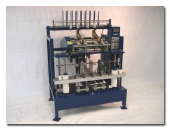
 5
5











 10
10











 5
5




Visit Redhawk's soil series: https://permies.com/wiki/redhawk-soil
How permies.com works: https://permies.com/wiki/34193/permies-works-links-threads
 3
3




Other Mini-Mills across Canada process a variety of fibres to varying extents and all of the mills are working at maximum capacity in terms of demand.
These mills are limited by low processing capacity, the low price for this processing and the high initial cost of the machinery and related infrastructure.
It would be great to see an update in those statistics. It sounds like an effort to diversify farms, and produce "value added" products, but if your love is for "farming", is this a value-added direction that gives someone involved in the farm a sense of accomplishment?The continental US has seen a surge in the use of Mini-Mill equipment for onfarm processing of fibre, but time will tell how well they survive.
Visit Redhawk's soil series: https://permies.com/wiki/redhawk-soil
How permies.com works: https://permies.com/wiki/34193/permies-works-links-threads
 3
3











 4
4




There is this totally awesome mill in Guatemala, called the New Denim Project.
 2
2




 2
2




Visit Redhawk's soil series: https://permies.com/wiki/redhawk-soil
How permies.com works: https://permies.com/wiki/34193/permies-works-links-threads

|
Did you miss me? Did you miss this tiny ad?
permaculture and gardener gifts (stocking stuffers?)
https://permies.com/wiki/permaculture-gifts-stocking-stuffers
|


